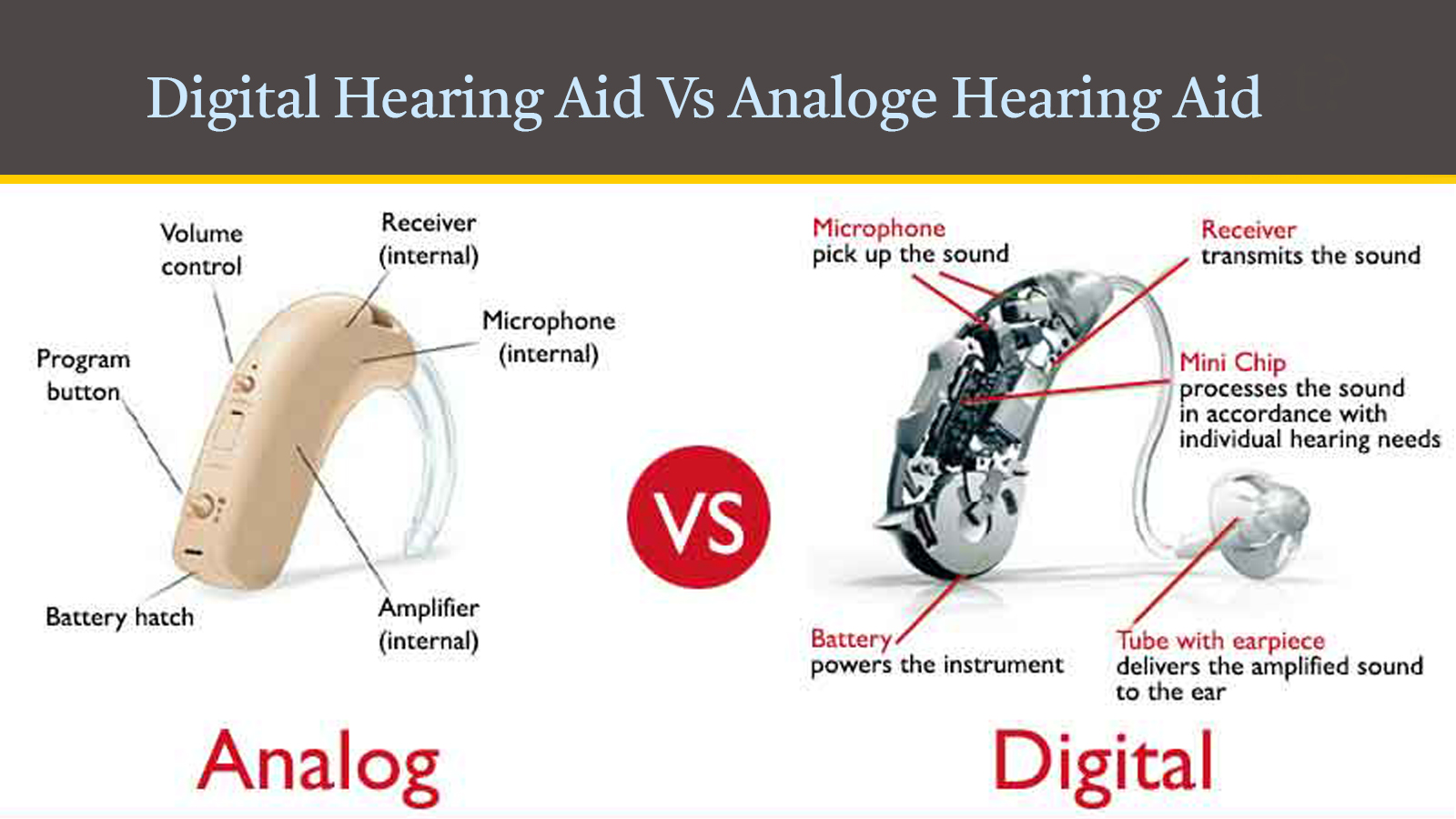Hearing aids are essential devices for individuals with hearing loss to help them communicate and connect with the world around them. There are two main types of hearing aids available in the market today: digital and analog.
Analog hearing aids have been around for several decades and were the only type of hearing aid available for a long time. They work by amplifying sound and sending it directly into the ear canal. They have a microphone, an amplifier, and a speaker that work together to amplify sound. However, they are less sophisticated than digital hearing aids and can sometimes produce distorted or feedback-prone sound.
On the other hand, digital hearing aids are a more recent development and have advanced in technology in recent years. They use digital processing to convert sound into digital signals that can be manipulated and customized according to the user’s hearing needs. The digital signal is then converted back into sound and sent to the ear canal through a receiver. This technology enables greater precision and customization, leading to better sound quality and clearer speech.
One of the most significant advantages of digital hearing aids is their ability to suppress background noise. This feature is especially useful in noisy environments, such as restaurants or crowded public spaces, where it can be challenging to hear and communicate. Digital hearing aids can also be programmed to adapt to different listening environments, such as music concerts or lectures, by adjusting the level of amplification and sound quality.
Another advantage of digital hearing aids is their ability to separate speech from other sounds, making it easier for users to understand speech in noisy environments. Digital hearing aids can also be programmed to amplify specific frequencies that are most difficult for the user to hear, improving overall hearing ability.
Digital hearing aids also offer more advanced features, such as Bluetooth connectivity, remote control, and smartphone apps, allowing users to stream audio from their phones or control their hearing aids with their phones.
While digital hearing aids offer many advantages over analog hearing aids, they also come with a higher price tag. However, the advanced technology and superior sound quality make them a worthwhile investment for individuals with hearing loss who want to stay connected and engaged with the world around them.
In conclusion, both digital and analog hearing aids have their advantages and disadvantages. However, digital hearing aids offer superior sound quality, advanced features, and customization, making them a popular choice for individuals with hearing loss. Ultimately, the decision between digital and analog hearing aids should be based on individual needs, preferences, and budget.

